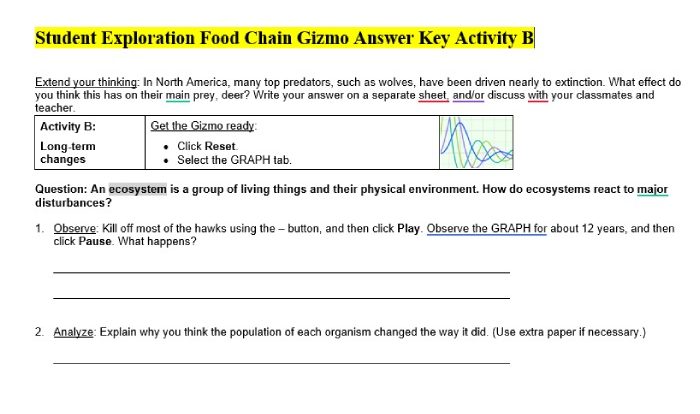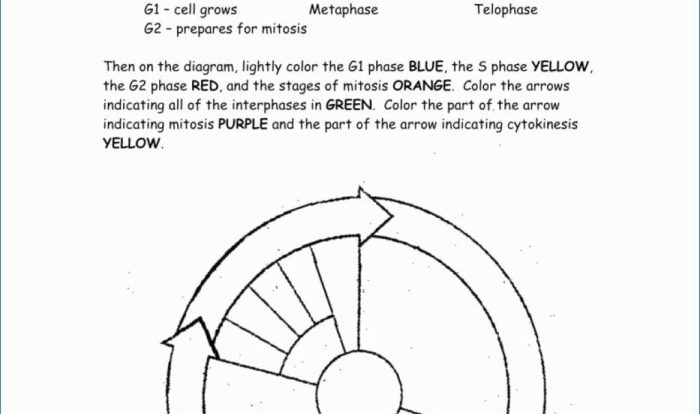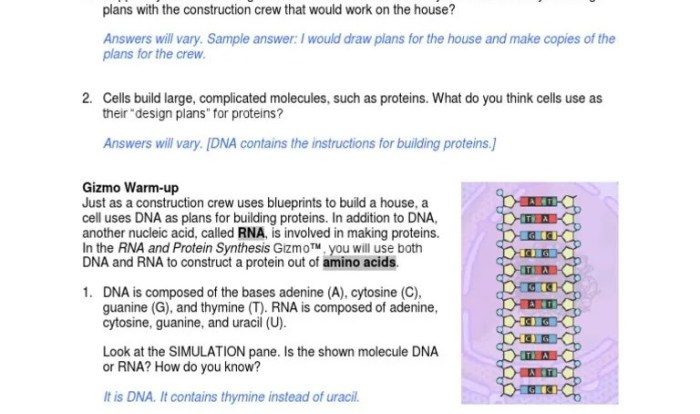Delve into the fascinating world of meiosis with our meticulously crafted Meiosis Internet Lesson Answer Key. This comprehensive guide unravels the complexities of this crucial biological process, providing a clear understanding of its definition, phases, and significance.
Our engaging internet lesson explores the key concepts of meiosis, presenting them in an accessible and interactive format. With real-life examples and detailed explanations, we illuminate the intricacies of this genetic phenomenon.
Meiosis Overview
Meiosis is a unique form of cell division that produces gametes (sex cells), such as eggs and sperm. Unlike mitosis, meiosis results in the halving of genetic material, creating cells with half the number of chromosomes as the parent cell.
This specialized process is essential for sexual reproduction, ensuring the preservation of species’ genetic diversity and preventing chromosomal imbalances in offspring.
Phases of Meiosis, Meiosis internet lesson answer key
Meiosis consists of two consecutive divisions, known as meiosis I and meiosis II. Each division is further divided into sub-phases:
- Meiosis I
- Prophase I: Homologous chromosomes pair up and exchange genetic material through a process called crossing over.
- Metaphase I: Homologous chromosome pairs line up at the equator of the cell.
- Anaphase I: Homologous chromosomes separate and move to opposite poles of the cell.
- Telophase I: Two daughter cells are formed, each with half the number of chromosomes as the parent cell.
- Meiosis II
- Prophase II: Chromosomes condense and the spindle apparatus forms.
- Metaphase II: Chromosomes line up at the equator of the cell.
- Anaphase II: Sister chromatids separate and move to opposite poles of the cell.
- Telophase II: Four haploid daughter cells are formed, each with half the number of chromosomes as the parent cell.
Meiosis in Internet Lesson: Meiosis Internet Lesson Answer Key
The internet lesson on meiosis provides a comprehensive overview of the process, including its key concepts and stages. The lesson effectively presents the complexities of meiosis in a clear and engaging manner.
Key Concepts of Meiosis
The lesson identifies the following key concepts of meiosis:
- Meiosis is a specialized form of cell division that reduces the chromosome number by half, resulting in the production of haploid gametes (eggs and sperm).
- Meiosis occurs in two sequential divisions, known as meiosis I and meiosis II, each with its own unique stages.
- During meiosis, homologous chromosomes pair up and undergo genetic recombination, leading to increased genetic diversity.
- Meiosis is essential for sexual reproduction, as it ensures the maintenance of the correct chromosome number in offspring.
Examples of Meiosis Presentation in the Lesson
The lesson presents meiosis through a combination of text, diagrams, and interactive simulations. Some notable examples include:
- Clear diagrams illustrating the stages of meiosis I and meiosis II, showing the chromosome behavior and genetic recombination.
- Interactive simulations that allow students to visualize the process of meiosis and manipulate chromosomes to understand their movement and pairing.
- Explanations of the role of meiosis in genetic diversity, supported by examples from real-world organisms.
Meiosis Answer Key

The following answer key provides detailed explanations for the meiosis questions in the internet lesson.
Interphase
- During interphase, the cell grows, copies its chromosomes, and prepares for cell division.
Prophase I
- During prophase I, the chromosomes condense and become visible. The homologous chromosomes pair up and exchange genetic material through a process called crossing over.
Metaphase I
- During metaphase I, the homologous chromosomes line up in the center of the cell.
Anaphase I
- During anaphase I, the homologous chromosomes separate and move to opposite ends of the cell.
Telophase I
- During telophase I, the chromosomes decondense and the nuclear membrane reforms around each of the two daughter cells.
Prophase II
- During prophase II, the chromosomes condense again and the nuclear membrane breaks down.
Metaphase II
- During metaphase II, the chromosomes line up in the center of the cell.
Anaphase II
- During anaphase II, the sister chromatids separate and move to opposite ends of the cell.
Telophase II
- During telophase II, the chromosomes decondense and the nuclear membrane reforms around each of the four daughter cells.
Meiosis Lesson Evaluation
The internet lesson on meiosis is an effective tool for teaching this complex topic. It provides clear explanations, engaging visuals, and interactive activities that help students understand the key concepts of meiosis.
One of the strengths of the lesson is its use of visuals. The diagrams and animations help students visualize the process of meiosis and understand the different stages involved. The interactive activities also allow students to practice what they have learned and test their understanding.
Improvements and Additional Resources
To enhance the lesson, a few improvements could be made. First, the lesson could be made more interactive by adding more opportunities for students to practice what they have learned. For example, the lesson could include more quizzes or practice problems.
Additionally, the lesson could be expanded to include more information on the genetic implications of meiosis. For example, the lesson could discuss how meiosis contributes to genetic diversity and how it is used in genetic engineering.
Commonly Asked Questions
What is the purpose of meiosis?
Meiosis is responsible for creating gametes (eggs and sperm) with half the number of chromosomes as the parent cells, ensuring genetic diversity and preventing chromosomal abnormalities.
How many phases are there in meiosis?
Meiosis consists of two divisions, Meiosis I and Meiosis II, each with its own distinct phases.
What is the significance of crossing over during meiosis?
Crossing over shuffles genetic material between homologous chromosomes, promoting genetic diversity and creating new gene combinations.


